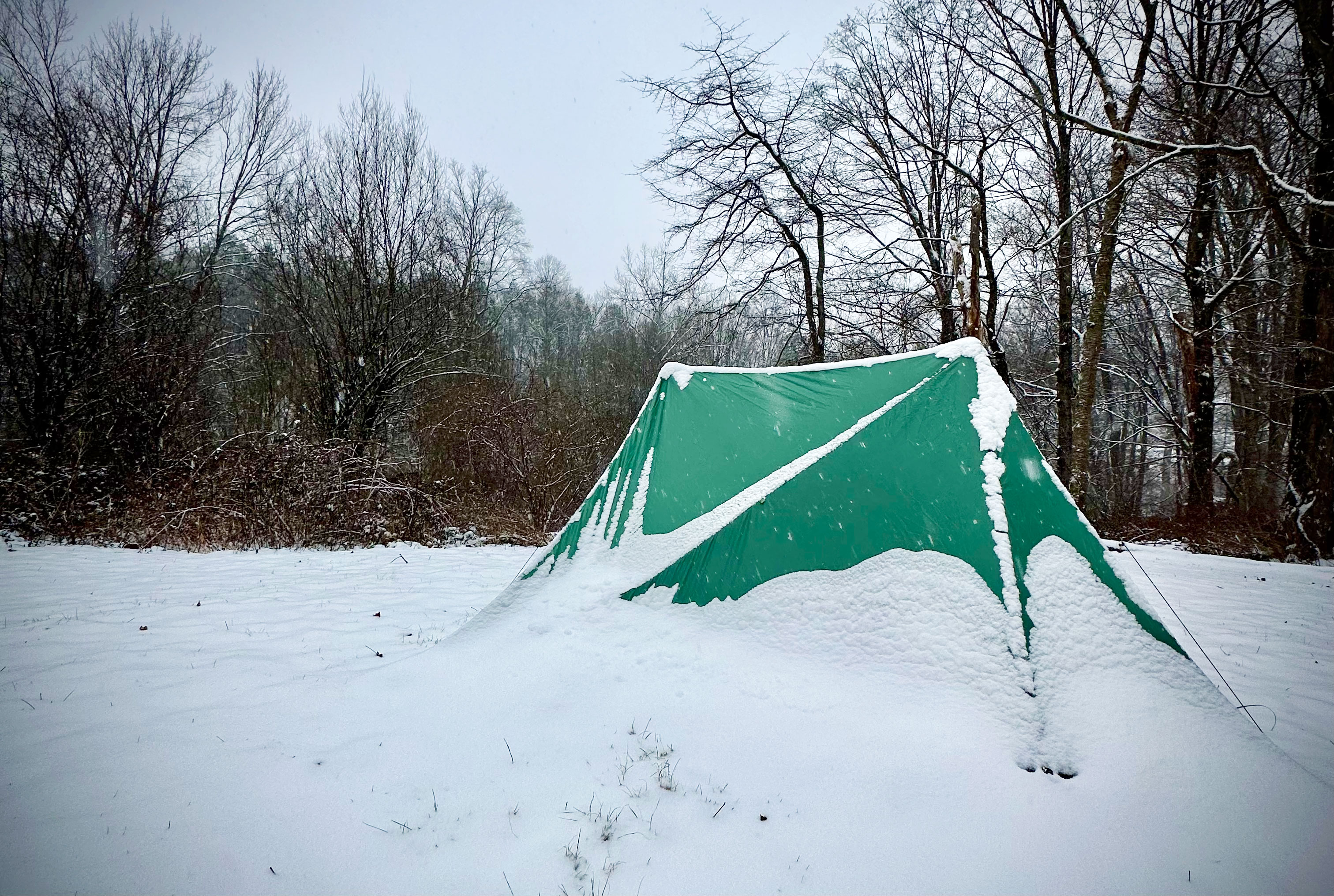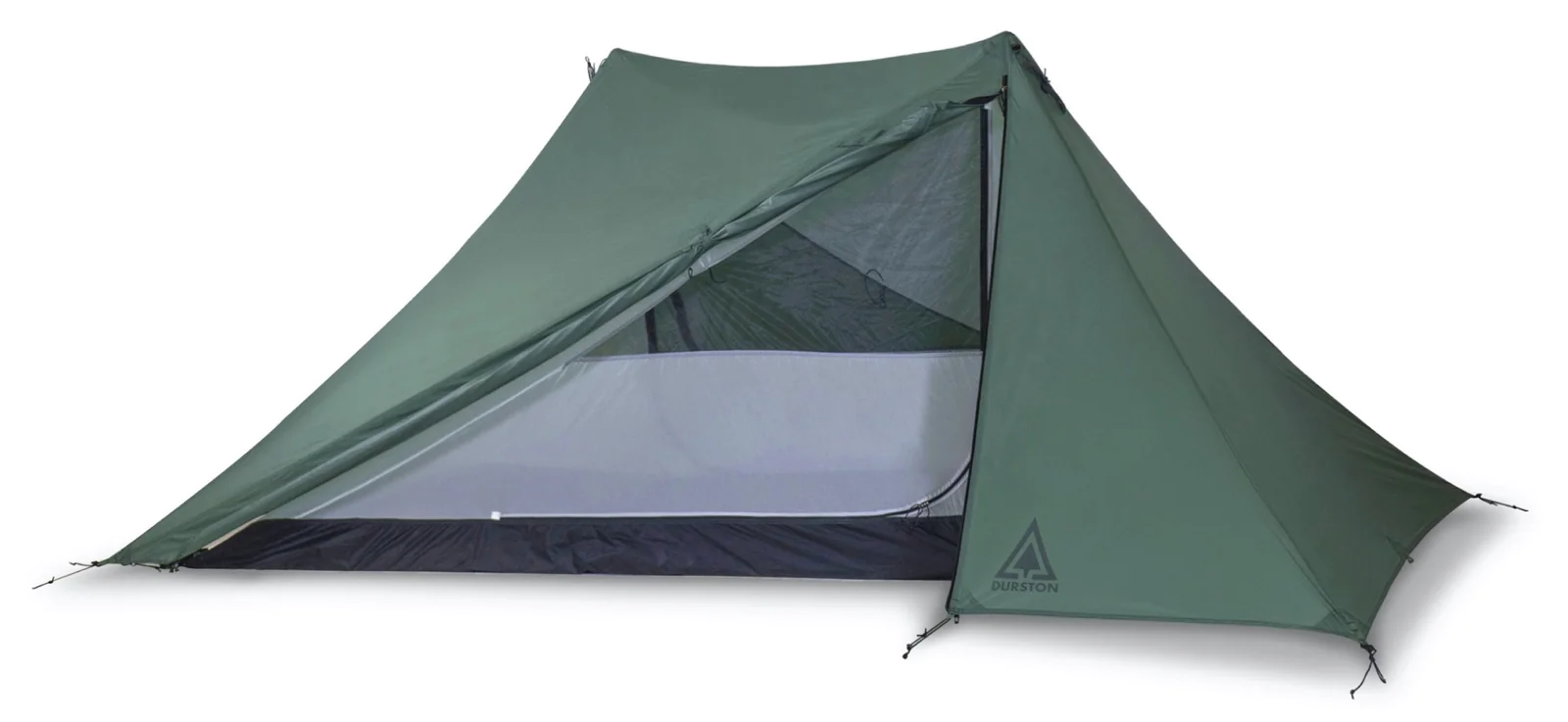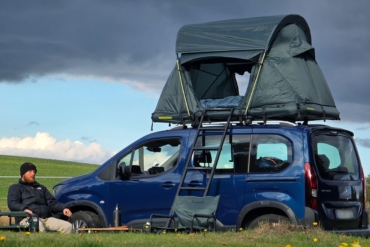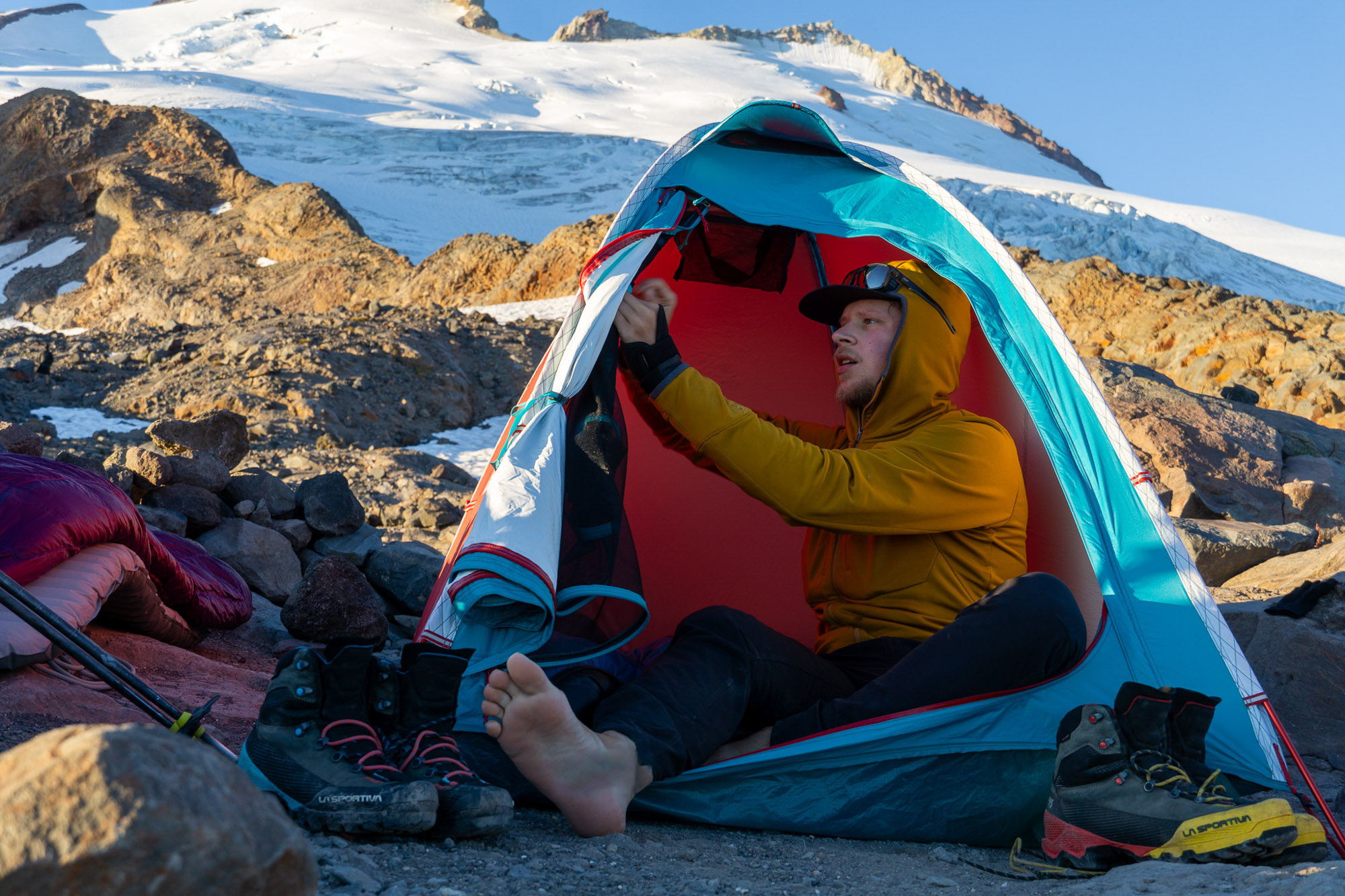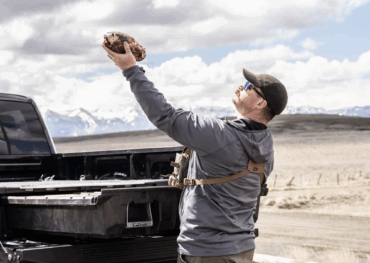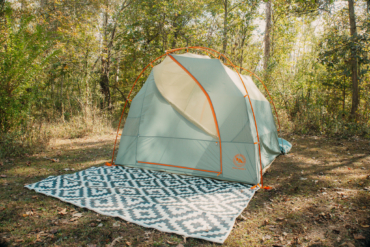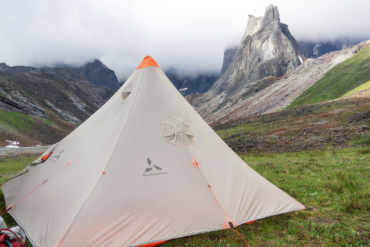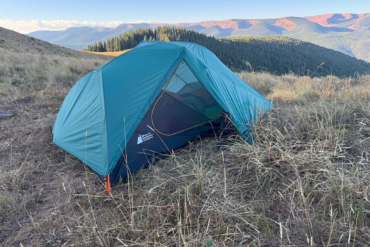Ultralight camping and cold weather usually don’t mesh well. Generally speaking, if you plan on camping in the late fall or winter, you should expect to pack on the pounds with the gear you’re carrying.
That said, Durston Gear, a boutique company located in the heart of the Canadian Rockies, is doing its best to keep that winter weight down with the X-Mid 1 Solid tent.
Coming in under 3 pounds with poles, the X-Mid 1 Solid is a cold-weather upgrade to Durston’s standard X-Mid 1. Storm-worthy, user-friendly, and just the right size, the X-Mid 1 Solid is designed to keep you out there even when the weather gets rough.
I initially received the tent in September but wanted to test it out in the cold rain and snow. Unfortunately, it took until late January to pick up almost 6 inches of the heavy, wet stuff. So, I trekked into the woods and had myself one heck of a Saturday night. And it only got hairier from there.
In total, the X-Mid 1 Solid was pitched out in snow, ice, and rain for 6 wild nights. And it was a total rockstar the whole time.
In short: The Durston X-Mid 1 Solid is a modern marvel of a tent. It’s a double-wall, single-person, ultralight tent — sub-3 pounds — that’s good for year-round camping, but is especially tailored to nights in the winter months. While most ultralight tents, by design and composition, favor fair weather conditions, the X-Mid 1 Solid is a great tent to take on solo winter adventures — especially if your favorite nights include the worst weather.
- Type: Ultralight backpacking
- Seasons: 4
- Weight as tested: 2 lbs., 7.5 oz.
- Waterhead: 3,500 mm / 138"
- Doors: 2
- Sleeps: 1
- Floor dimensions: 32" x 90"
- Height: 46"
- Footprint with fly: 67" x 100"
- Carry size: 12" x 5"
- Price: $340 (Tent = $270, Poles = $35 each)
Pros
- The overall design and rugged structure
- Low weight for a storm-worthy winter tent
- Easy setup protects you from the elements
- Magnetic toggles = No brainer
Cons
- Be prepared to fine-tune your stake placement the first time around.
Durston X-Mid 1 Solid Tent: Review
GearJunkie named the standard X-Mid 1 one of the best backpacking tents of 2024. It excelled in durability, design, and ease of setup. However, the best-of reviewers did find it a little heavy for an ultralight tent.
Now, while I agree it might be a little beefy to carry in the summer months, the X-Mid 1 Solid is a breath of fresh air in terms of ultralight tents for winter camping.
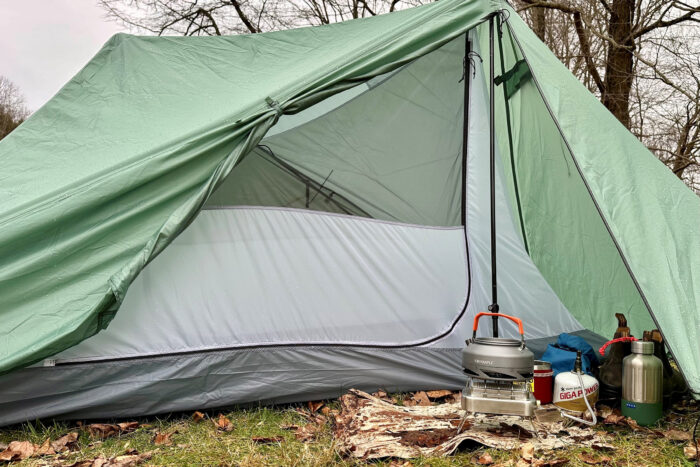
Design & Features
With the X-Mid 1 Solid, Durston set out to create a cold-weather, ultralight tent that was also storm-worthy. To accomplish this, the brand focused on the right mix of materials and geometry.
Made from 20D Sil/PE polyester and 15D ripstop nylon, the X-Mid 1 Solid doesn’t use traditional tent poles. Like other ultralight designs, it sets up using your trekking poles. Alternatively, Durston also offers Z-Flick telescoping carbon fiber poles (sold separately).
Carbon fiber tent poles, and trekking poles for that matter, are known for their incredible durability and flexibility. Those properties aid in the X-Mid 1 Solid’s ability to stand up to nasty weather.
There’s science behind the geometry of the X-Mid, which Durston fine-tuned to build tents that are “weight efficient, simple, and functional.” The fly and inner tent on the X-Mid don’t marry each other geometrically. Instead, they use opposing angles, tie-downs, and two poles to create a rigid structure that requires minimal setup.
First Impressions
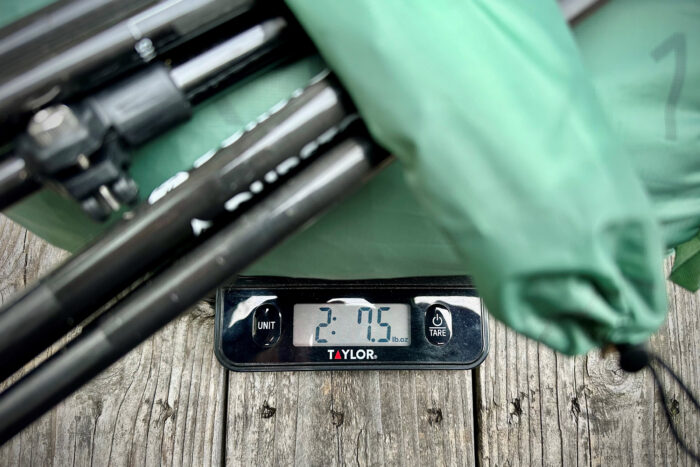
My initial first impression of the tent was one of surprise. Having more experience with expedition-style 4-season tents, I was taken aback at how small the tent was in its stuff sack — about the size of a loaf of bread. I was also pleasantly surprised at how light the Z-Flick telescoping poles were.
I’m sure some folks would throw a fit that this tent weighs almost 3 pounds, but to me, that’s insanely lightweight. But it’s doubly impressive when you consider what this tent can withstand (more on that in a minute).
On the first setup, the X-Mid 1 Solid required a bit of a learning curve, as I’m used to tent poles that form a complete structure around the tent (like common domed tents). You’ll need to work with the angles and adjust your stakes a few times to get it just about perfect.
But I managed to set it up for the first time in about 10 minutes — and I stopped a few times to check my Instagram feed.
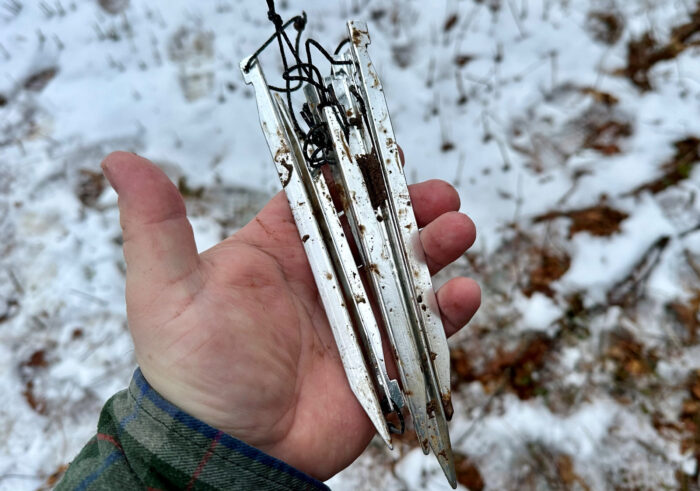
Setup Science
In the end, I found the best way to set up the X-Mid was to stake out the fly, making sure the corners were staked as close to 90 degrees as possible. This will save you from having to go back and make adjustments.
When you set it up, set the pole height to 210 cm and insert them through the vents at either end of the tent. This ensures that the structure is rigid, so you can go in and clip the top of the inner tent to the two side-release buckles (near the cup where the poles seat).
From there, clip the lines that extend from each corner of the tent to the D-rings in each corner of the fly — tighten them up.
Keep in mind that the two opposing tent corners (northeast and southwest) may seem like they’re too far away from the connecting point on the fly. They are not. Trust in the science, it may seem a little weird, but it works.
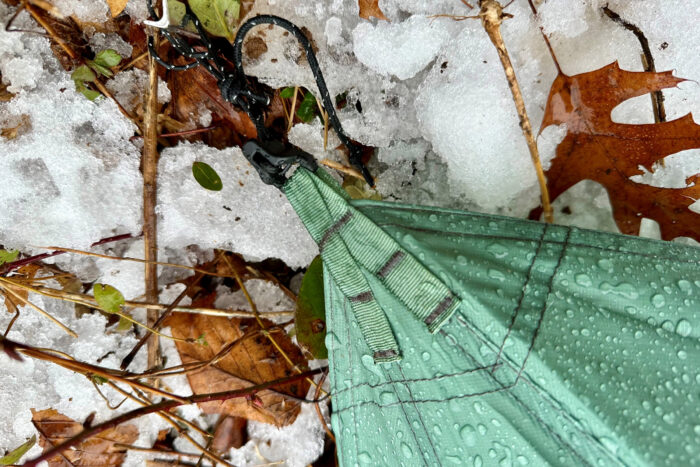
That said, the cord tensioners on this tent are great. They make for easy one-hand adjustment, whether the cord is dry or wet. But keep in mind, you’re not setting up trip wire in a remote jungle to trap your enemies. Don’t overtighten the lines, as it will lift the tent floor off the ground. That could damage the tent.
I don’t think I reinvented the wheel by inserting the poles through the vents, but Durston recommends going in through the large entry doors on the fly. Either way, it’s a fairly easy setup that keeps you out of the elements. You could throw all your gear inside during the process and save it from getting wet. That’s great if you get to camp late and the weather is bad.
In the Field
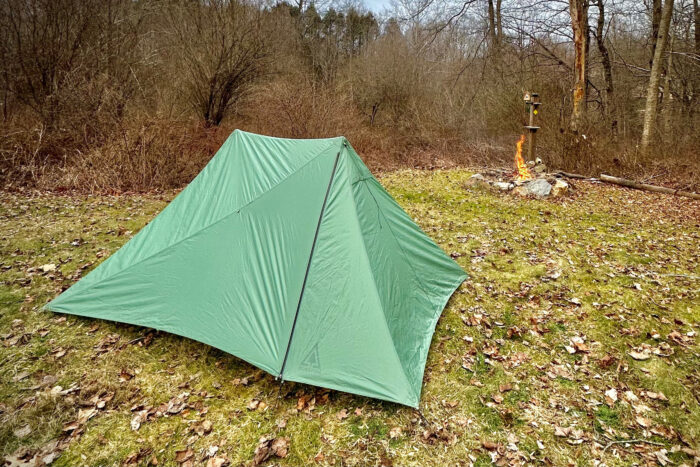
Seeing as this tent is geared toward winter weather, I waited until it snowed before I pitched, and lived in, the X-Mid 1 Solid. Once that happened, I kind of got stuck out there with it. Sure, I could have cut bait and brought a wet tent home, but I felt this was an ample opportunity to embrace the opportunity, so I dug in.
It snowed, then there was an ice storm, and then it snowed again — and then there was a day of rain. Finally, on the last day, it warmed up and the sun made a quick appearance. So, I was able to take the tent down, shake it off, and begin the process of drying it out.
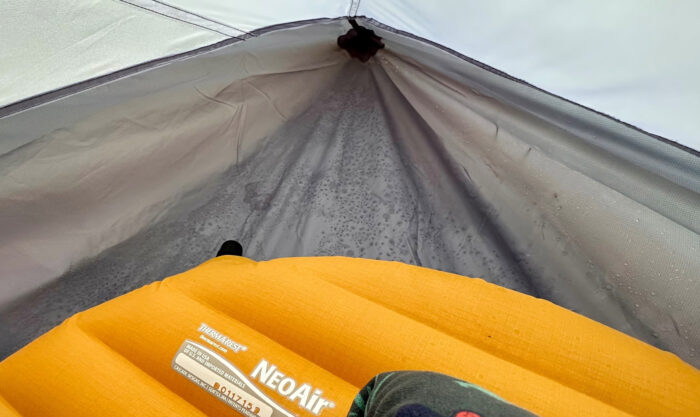
In total, the tent was up for 6 days and 5 nights. My kids got sick in the middle of it all, so I only spent 3 nights out in it. All 3 nights were below freezing, but I stayed warm inside.
To keep myself off the ground, I used my Therm-a-Rest NeoAir sleeping pad and Sea to Summit Reactor Fleece Liner. The combination did a great job of keeping me warm and elevated.
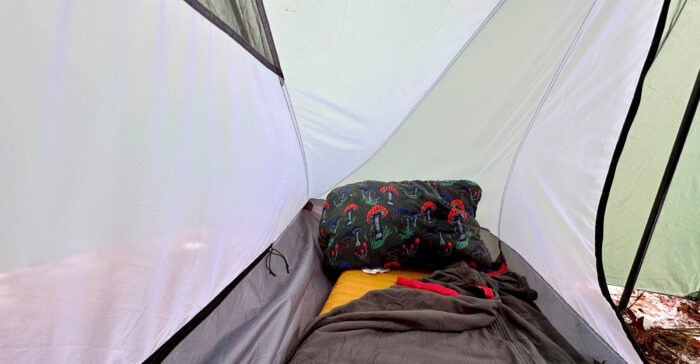
Though at no time did any moisture get inside the tent, the floor was very cold. One way to combat this would be to use a groundsheet.
Getting Situated
Inside the X-Mid 1 Solid, there’s plenty of room on the ground, but there isn’t a lot of headroom or space to move around. You’ll be able to sit up or roll over, but there’s no room for ballroom dancing. And that’s what you want in the winter. The less space to keep warm inside, the better.
This may require you to leave a few items outside the tent, but you’ll be surprised how much you can store inside.
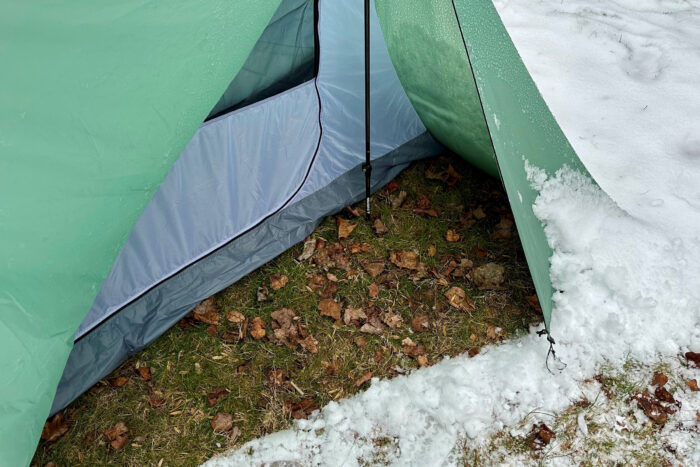
If you do have to leave some gear outside the tent, the vestibules on the fly offer complete protection from the elements. I left my Blundstone boots out all night, as well as a couple of other bits of equipment, and aside from being cold, they were dry.
I’ve spent quite a few snowy nights in traditional dome tents and some higher-grade, double-wall four-season tents. I even woke up one morning with one of those tents collapsed on my chest due to 6 inches of snow sitting on top of it.
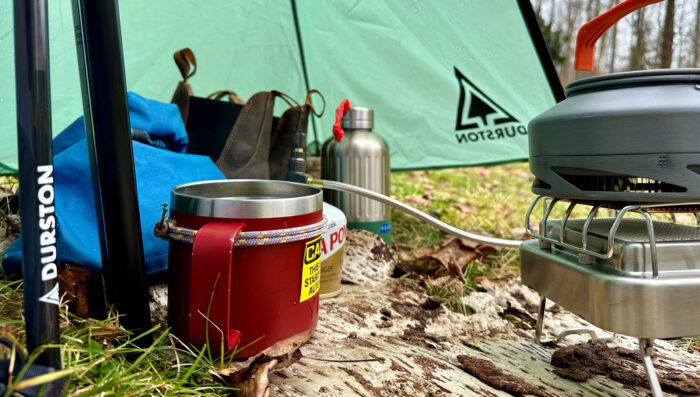
The fabric on the X-Mid 1 Solid will stretch under the weight of ice and snow, but due to its unique design, the walls of the fly never touch the walls of the tent itself. This leaves you dry as a bone inside — and the tent won’t cave in on you.
Drawbacks
The only thing that might be off-putting about the X-Mid 1 Solid is that it’s not a freestanding tent. In the colder months, this could jam you up if the ground is frozen.
A quick remedy to this is to bring a good hammer. The stakes that come with the tent are way better than those most popular tents offer. These will endure a few good whacks into the ground.
This is important because beyond its well-thought-out design, part of the X-Mid 1 Solid’s ability to withstand adverse weather conditions is its need to be tethered to the Earth.
You can’t fight science, excellent design, and solid engineering.
Durston X-Mid 1 Solid Tent: In Conclusion
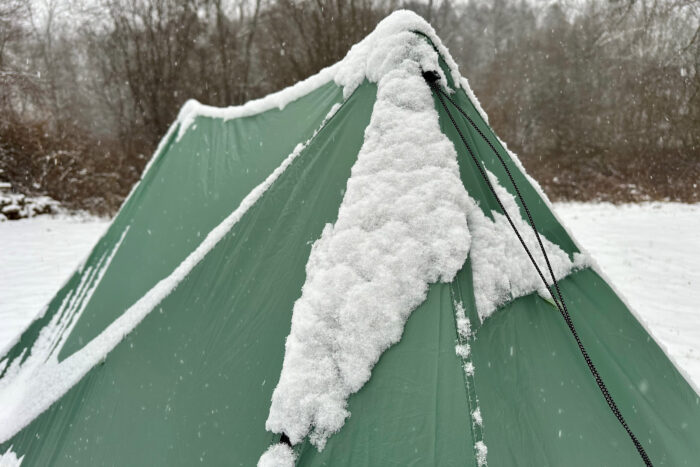
I would have never expected a tent as light as the Durston X-Mid 1 Solid, which relies on two poles that aren’t even connected to the tent, to stand up to one winter storm. But it did. And I am sure it’ll do it again and again if need be.
The X-Mid 1 Solid is one big innovation; the right fabrics combined with the right design. To say I am impressed would be an understatement. Even though Durston designed the Solid for winter weather, in my opinion, it is a true four-season tent that can handle any kind of weather the gods throw at it, all year round.
Two important notes if you’re considering this tent for purchase: First, if you already have trekking poles, you don’t need to pony up for the carbon fiber Z-Flick poles Durston offers. They are awesome poles, but go ahead and save the $70 and 6.8 ounces of weight.
And second, this is a true single-person tent. You can’t squeeze your sweetheart inside this one. If you do, you run the risk of knocking into the pole and dropping the tent. As I said, you don’t want extra room in a winter tent, because you’ll end up getting cold prematurely.
If the change of seasons does nothing to affect your camping calendar, then I highly recommend you look into the Durston X-Mid 1 Solid for lightweight, comfortable adventures in any weather.
